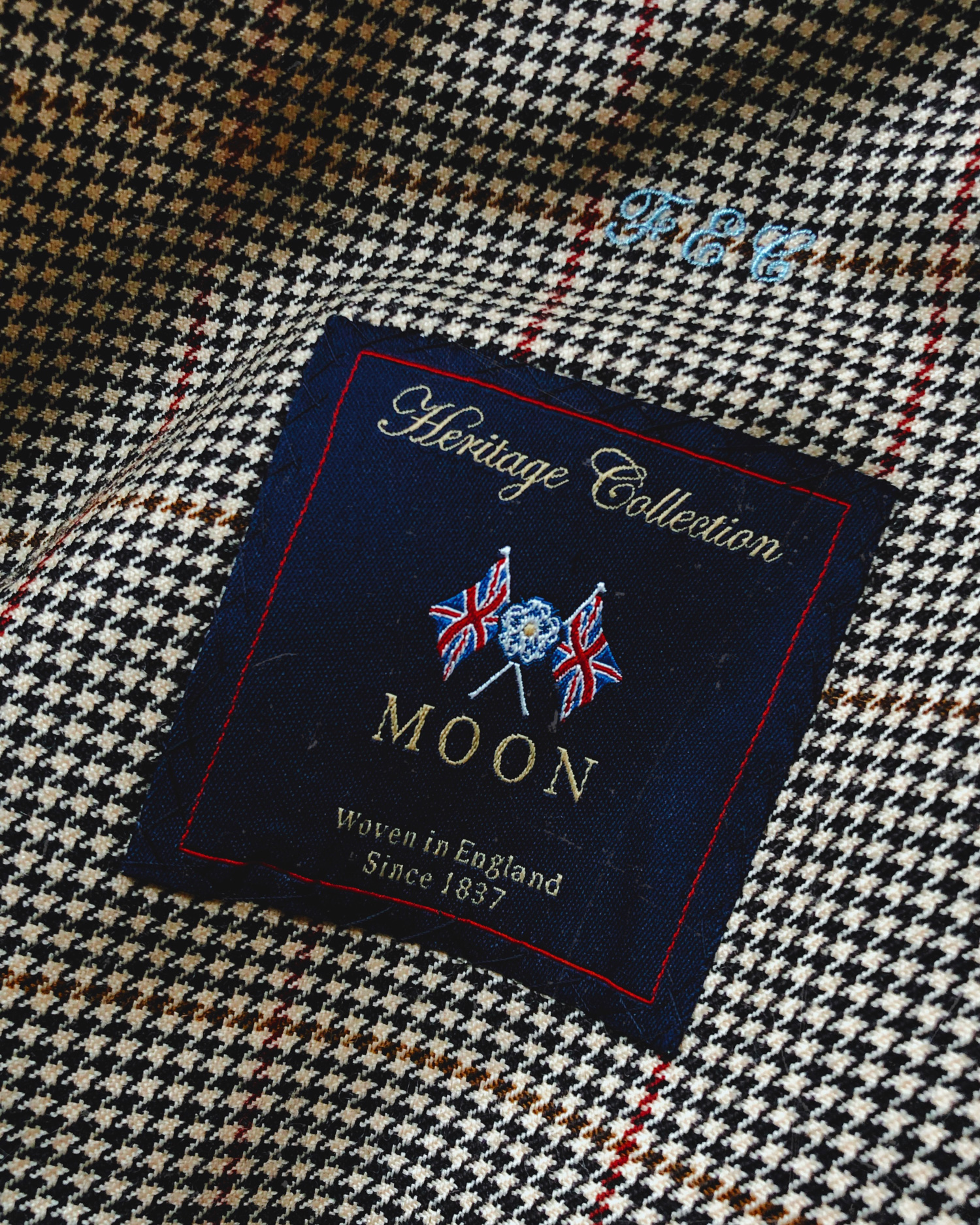Abraham Moon & Sons
by Eric Twardzik
“I love the mentality of England, the tradition, and the old values.
I love the suits of the gentlemen, the way they dress and live in the country. There is a code of light formality in England today. It is something the modern world forgets.”
Valentino was on to something here. The Italian fashion designer poetically places his thumb on an English sensibility that deeply informs what we do at F.E. Castleberry. It’s evident in our anointment of a young David Hockney as a cardinal brand muse, our allegiance to a code of light formality (albeit slightly bent)—the better your dress, the worse you can behave—and our faithfulness to British cloth; especially our faithfulness to British cloth.
Our predilection for houndstooth, Glenn plaid, bold stripes, checks, and Harris tweed is unapologetic and frankly, fanatical; however, in a very un-British fashion, we soften everything up. Our natural—often unconstructed—shoulder and unlined construction give our made-to-measurement jackets and coats a distinctly American, free and easy feel.
That’s why we’re excited to offer a range of wools from Abraham Moon & Sons as part of our AW18 selection. In a field romanticized for its Britishness, Abraham Moon may be the most British. How British is that? Aside from sounding like the name of a untenured Hogwarts Professor, Abraham Moon was the 1995 recipient of The Queen’s Award for Export—presented by none other than QEII herself, at Buckingham Palace—and earned a four-hour visit from Prince Charles in 2015 as part of HRH’s Campaign for Wool (a British campaign we can fully endorse).
Even its origins align with the Crown. Abraham Moon & Sons was founded in Guiseley, West Yorkshire, in 1837—the same year that Queen Victoria ascended the throne. They were the first vertically integrated mill in town, and by close of the century their exports stretched from Western Europe to Japan.
Moon & Sons supplied cloth for the British Army in WWI, and survived the wave of shutters that decimated the British fabric business during the 20th century’s latter half. They remain one of Britain’s last-standing vertical mills, and continue to dye, spin and weave in the same building they’ve occupied since 1902.
As a vertical mill, everything at Abraham Moon begins with the raw wool. Their Merino comes from South Africa, the Shetland from New Zealand. The wool is dyed via a closely guarded equation involving time, pressure, and temperature, ensuring that their palette of over 500 colors can’t be replicated. For consistency’s sake, an on-site dye library helps them track standards.
Astoundingly, each yarn of Abraham Moon fabric can hold up to seven colors. The math here means that a tartan containing six colors in reality has 42 that can be picked up by the eye. This translates into murky tweeds and rich tartans with incredible range.
Among our favorites from this season are 100% wool highland tartans, whether they’re classic black watch overlaid with a discreet windowpane or bold, take-no-prisoner plaids that make use of every colored yarn Moon has to offer. There are town tweeds that can (almost) fade into the background with a tasteful, muddy houndstooth, then pop back into focus with a blue-and-green check when no one’s looking.
And then there’s the bold blazer stripe, composed of a navy ground overlaid by chalk-thick lines of dense yellow outlining a bold blue. The pattern makes us feel as if we’re about to lay down an oar at the height of Pax Brittanica or step up to the mic for The Kinks. Its composition is 60% wool, 40% cotton—just the sort of nudge needed if you’re not 100% ready for Fall to begin (we’ll excuse it).




